Visit The Phimeanakas Temple In Cambodia For A Blissful Trip In 2026

Phimeanakas Temple, situated in Angkor’s old city, is a charming construction from the Khmer Domain. Inherent the tenth hundred years, this Hindu Temple was devoted to Shiva and Vishnu and represented Mount Meru, a sacred cosmic mountain. The Temple’s point-by-point carvings, huge laterite blocks, and cross-formed porches intrigue guests and showcase the ability of Khmer developers. As an image of Cambodia’s rich history, Phimeanakas indicates the Khmer Realm’s ascent and fall.
About Phimeanakas Temple
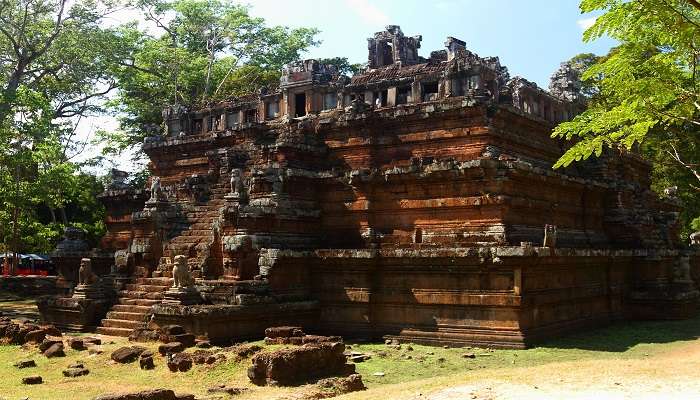
Phimeanakas, also known as Vimeanakas, is a unique temple in Angkor, Cambodia. It was built as a Hindu temple in the 10th century by two kings, Rajendravarman and Suryavarman I. The temple looks like a three-level pyramid with a tower on top and galleries on the highest level.
The temple is inside the Royal Palace of Angkor Thom, north of another temple called Baphuon. It was an essential part of the capital city for King Suryavarman I. A giant wall surrounds the quiverings from his time and inc, including her and Northern Khleangs. The temple tower used to have a golden top, as described by Zhou Daguan in his book from 1297 CE.
The temple was rebuilt in a more impressive style in the late 12th century. But by the 15th century, like many temples at Angkor, Phimeanakas was abandoned. Over time, jungle vines grew over its walls. Today, the temple is a reminder of the greatness of the Khmer Empire, and it continues to amaze visitors with its exciting history and beautiful architecture.
Must Read: Kbal Spean
Legend Behind The Phimeanakas Temple
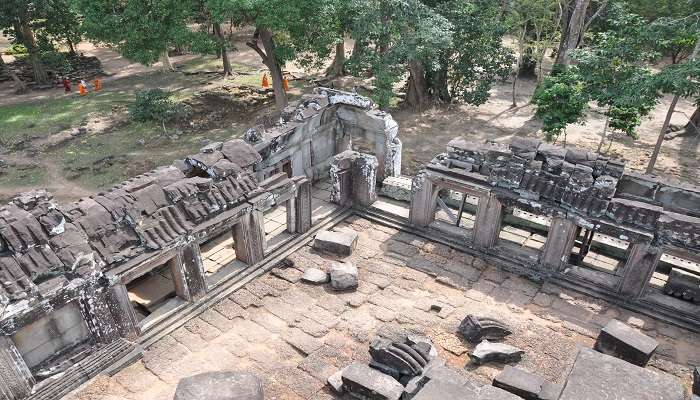
The temple was the focal point of Suryavarman I’s capital. The structures from his reign are enclosed by a wall measuring 600 by 250 meters, featuring five gopurams, and include the Southern and Northern Khleangs. Initially, the tower was crowned with a golden pinnacle, as described by Zhou Daguan in his 1297 CE work, “The Customs of Cambodia.”
According to legend, the king spent the first watch of every night with a woman believed to represent a Nāga in the tower. During this time, not even the queen was permitted to intrude. The king would return to his palace with the queen only in the second watch of the night. If the Nāga, who was considered the supreme landowner of Khmer land, did not appear for a night, the king’s life would be in danger, and if the king did not show up, calamity would strike his land.
Architecture Of Phimeanakas Temple

The main structure of Phimeanakas Temple Angkor is a pyramid with three tiers, each slightly smaller than the one below. The bottom tier measures 35 meters by 28 meters, while the top tier measures 30 meters by 23 meters. A steep stairway, guarded by lion statues, leads to the top. Elephant statues adorn the corners of the tiers.
At the top of the pyramid is a platform with small galleries, a design element that was later used on a much larger scale in Angkor Wat. In the centre of the platform are ruins of what was once a tower. This dilapidated stone structure likely replaced an original wooden one. This tower, described by Zhou Daguan as the “Golden Tower,” was where the Nāga was said to appear each night.
At the eastern entrance of Phimeanakas, there is a building with a single tower that houses an inscription dated to 1011 AD containing an oath of allegiance to the king. This entrance was the most significant feature of the temple. as it was where the king would enter the temple.
Suggested Read: Pub Street
Phimeanakas Temple Timings, Fees, And Best Time To Visit
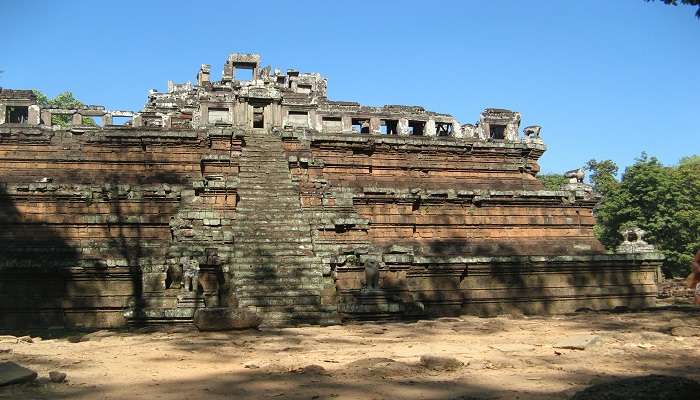
Phimeanakas Temple is a beautiful pyramid-shaped temple in Angkor Wat, Cambodia. It’s open from early morning (5 AM) till evening (6 PM). You can enter it with the same ticket you buy for Angkor Wat, which starts at $37 for a day. The best time to visit is during the dry season, from November to April, because the weather is nice. But it can be crowded. If you want fewer people around, try going in May, June, September, or October. The temple looks amazing during sunrise and sunset, but you won’t see the sunrise clearly because of the trees.
Top Places To Visit Nearby Phimeanakas Temple
Phimeanakas Temple Angkor is surrounded by numerous historical and cultural landmarks. Here are a few must-visit places nearby:
1. Angkor Wat
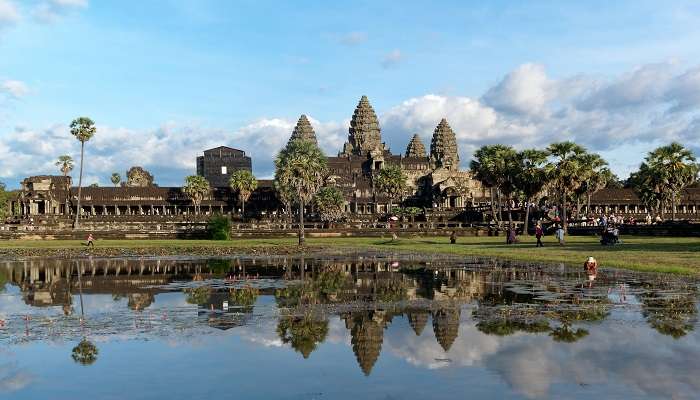
Angkor Wat is a Hindu-Buddhist temple complex located in Cambodia. It covers an impressive 162.6 hectares (402 acres) within the ancient Khmer capital city of Angkor. Constructed during the early 12th century by the Khmer King Suryavarman II, it originally served as a Hindu temple dedicated to Vishnu. Over time, it transformed into a Buddhist temple. The architecture of Angkor Wat combines two fundamental Khmer temple styles: the temple mountain and the later galleried temple. Surrounded by a 5 Km (3.1 mi) moat, it features three rectangular galleries, each raised above the next. The central structure stands as a quincunx of towers. Angkor Wat’s grandeur, intricate bas-reliefs, and devatas make it a remarkable cultural and architectural treasure.
Location: Krong Siem Reap, Cambodia
Travel Time: 10 minutes
2. Angkor National Museum
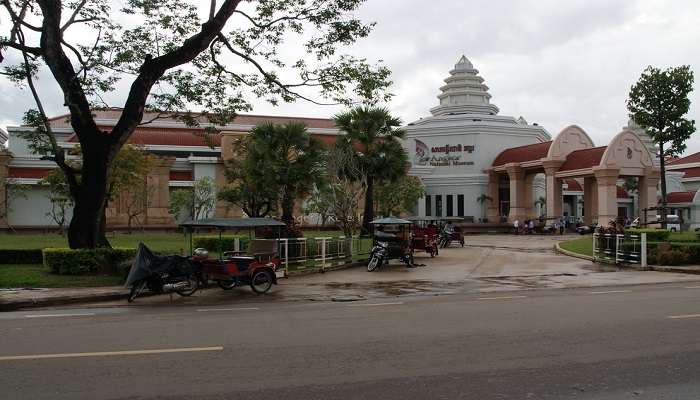
The Angkor National Museum in Siem Reap, Cambodia, is an impressive archaeological museum dedicated to preserving and presenting Angkorian artefacts. Opened in November 2007, it covers the golden era of the Khmer Empire. It showcases the Khmer history, civilisation, and cultural heritage through eight galleries. Visitors can explore themed exhibits, including the Gallery of 1,000 Buddha, which showcases Buddhism’s spiritual influence on Cambodian people, and the Great Khmer Kings Gallery, which highlights famous rulers like King Jayavarman II. The museum’s strict no-photos policy ensures a respectful experience with the ancient artefacts.
Location: 968 Vithei Preah Sihanouk Ave, Krong Siem Reap, Cambodia
Travel Time: 21 minutes
3. Bayon Temple
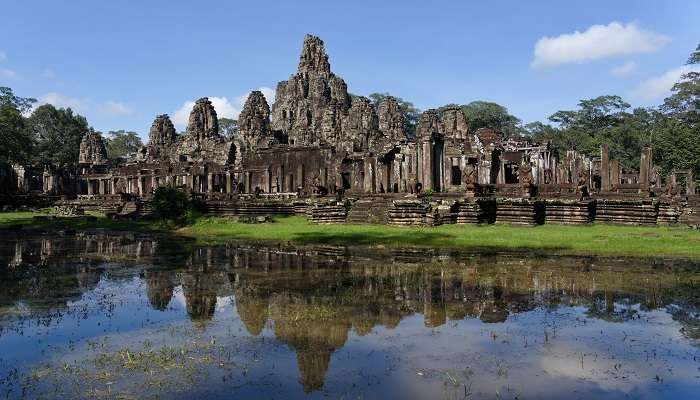
The Bayon Temple, also known as Jayagiri, is a historic temple in Cambodia, built in the late 12th or early 13th century by King Jayavarman VII. Located in Angkor Thom, the temple is renowned for its towers adorned with serene and smiling stone faces, possibly modelled after the king himself. The temple also features two sets of bas-reliefs depicting a mix of mythological, historical, and everyday scenes, offering a unique insight into the Khmer Empire’s culture and society at its zenith. As part of the popular Angkor Wat Small Circuit Tour, the temple and Angkor Wat and Ta Prohm offer visitors a chance to explore its three tiers and immerse themselves in history and architecture.
Location: Krong Siem Reap, Cambodia
Travel Time: 13 minutes
4. Pub Street
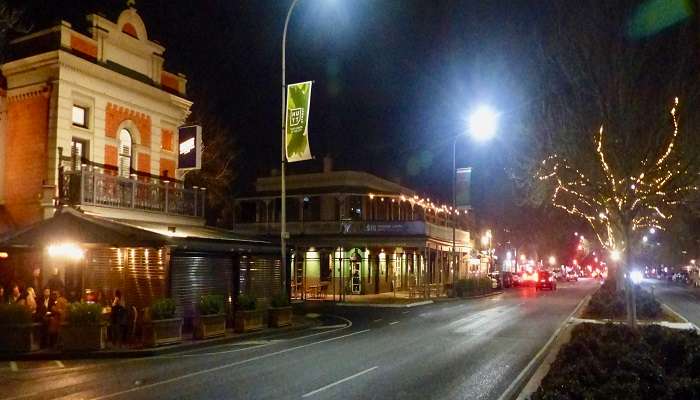
Located next to the bustling old downtown, this lively road is home to many bars and clubs famous with vacationers. During the day, you can relish bona fide Southeast Asian food at the cafés coating the road. The neon-lit bars wake up as sunsets, offering an exceptional nightlife experience.
Location: Krong Siem Reap, Cambodia
Travel Time: 24 minutes
How To Reach
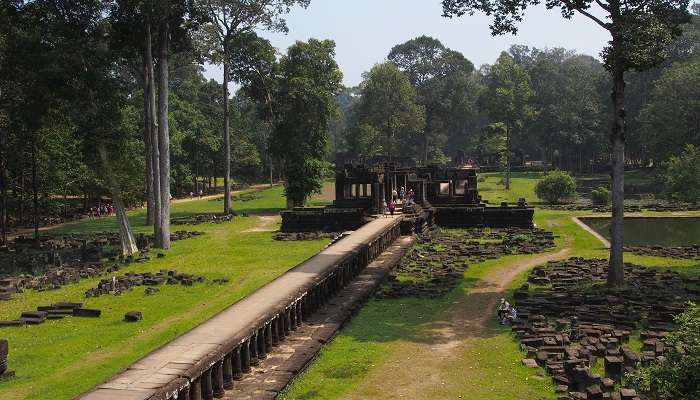
To visit Phimeanakas Temple Angkor today, travellers must reach the ruins of the ancient Angkor Thom, established as the last power seat during the Khmer Empire’s glory days. Angkor Thom is only 11 Km from Siem Reap, the nearest city, where taxis and tuk-tuks are readily available to take you to the temple site. You can book these for $15 – $22 to tour the major temples in the Angkor Archaeological Park.
Further Read: Banteay Srei Cambodia
Phimeanakas Temple is a testament to the grandeur and design brilliance of the Khmer empire. Its remarkable structure is an enthralling sign of Cambodia’s rich social legacy. As you leave this antiquated wonder, let the soul of investigation touch off inside you. Why not plan an unforgettable trip to Cambodia? There are many treasures like Phimeanakas waiting to be discovered. Book your trip to Cambodia today and experience the magic of this incredible place, where history comes to life everywhere you go.
For our editorial codes of conduct and copyright disclaimer, please click here.
Cover Image Credit: Clay Gilliland for Wikimedia Commons
Frequently Asked Questions About Phimeanakas Temple
Is Angkor Thom Hindu or Buddhist?
Angkor Thom is not a singular temple dedicated to a Hindu deity like Angkor Wat. Instead, it was one of the most impressive royal cities of the Angkor Period (9th–15th centuries) and an urban planning marvel. It was established in the late twelfth century by King Jayavarman VII. After Jayavarman’s death, later Hindu and Theravada Buddhist kings modified and augmented it based on their religious preferences. Therefore, Angkor Thom is both Hindu and Buddhist
Which is older, Angkor Wat or Angkor Thom?
Angkor Wat is older than Angkor Thom. King Suryavarman II built Angkor Wat in the 12th century, and King Jayavarman VII established Angkor Thom in the late twelfth century.
How old is Angkor Wat really?
Angkor Wat was built by the Khmer King Suryavarman II in the first half of the 12th century, around 1110-1150. This makes Angkor Wat almost 900 years old.
Which temple is older than Angkor Wat?
The Vat Phou temple complex in Laos is older than Angkor Wat. Another temple, Sambor Prei Kuk, dates from the earlier Chenla Kingdom that preceded the Khmer Empire.
Who is the god of Angkor Wat?
Angkor Wat was initially constructed as a Hindu temple dedicated to the deity Vishnu, one of the three principal gods in the Hindu pantheon. However, towards the end of the 12th century, it gradually transformed into a Buddhist temple.
People Also Read:
Masceti Temple Lempuyang Temple Omkareshwar Mandir

Innovative Content Writer Focused on Producing High quality, Original Content that drives traffic and engages readers. Experienced in Content strategy and analytics to measure content performance using tools such as SQL, Power BI, Excel.











